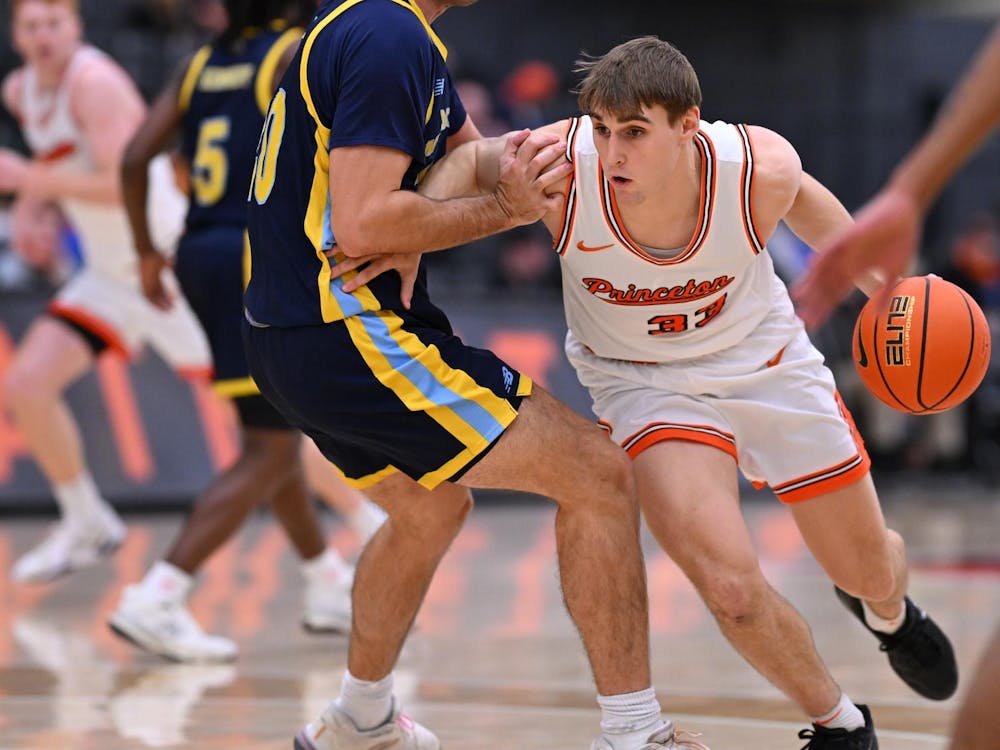Offense wins games, but defense wins championships.
Most sports fans have heard this cliché more times than they can remember. But there's something missing from it.
What about special teams?
Other than the "Music City Miracle" and other, less memorable, kickoff or punt returns for touchdowns in football, special teams get overlooked in a lot of sports. Most sports, in fact, don't even have them.
Hockey does, though — two different kinds, in fact — and how a team performs under special circumstances can be the difference between a champion and an also-ran.
While the men's hockey team has been extremely efficient on the penalty kill — the defensive side of the special teams — the power play had been totally shut out since Nov. 17, when the extra man unit scored once against Vermont. Until last Friday, the Tigers were 0-for-23 with the extra skater.
Until last Friday.
When freshman forward James Fitzpatrick scored the game winning goal against Colgate at 11 minutes, 33 seconds in the third period, he broke Princeton's scoreless power play streak and gave the team its third one-goal win of the season, 2-1.

So with the Tigers' newfound extra man punch, we take a look at what it is exactly that Princeton tries to do when an opponent gets a penalty.
First, some basics. A power play is the result of a team taking a penalty, resulting in the loss of one skater for a pre-determined amount of time — two minutes or five minutes, depending on the severity of the penalty.
There are some other rules in NCAA hockey covering types of penalties and penalty shots, but for now the thing to remember is that if Princeton has more people on the ice than the other team, chances are the Tigers are on a power play.
Princeton, like most teams, plays with two different power play lines — a first unit and a second unit. Fitzpatrick plays with the second group.

Clearly, the power play unit's focus is scoring. An extra skater on offense offers some clear advantages; by definition there will always be one skater that the defense cannot fully account for.
So how do the Tigers try to convert on these open opportunities?
"We try to get the puck down low [close to the goal]," Fitzpatrick said. "We're supposed to crash the goal down low."
In addition to screening the opposing goalkeeper and creating havoc near the crease, the forwards are responsible for getting the puck to the defensemen — a strange reversal on the normal hockey offensive strategy.
On the power play, while the forwards play down, close to the goal, the defensemen play back near the blue line, a position known as the point.
The fastest shots — and most difficult to save — usually come from the point, and so the accuracy and power of a defenseman like senior captain David Schneider is key to an effective power play.
"We're really looking to get shots from the point," Fitzpatrick said. "Part of our job [as forwards] is to feed the defense."
Fitzpatrick's goal was something of an aberration.
Instead of bringing the puck into the offensive zone and setting up the attack, Fitzpatrick took control of the puck in the right corner of the Colgate zone and skated undefended for the net. His game winner was unassisted.
The return of senior forward Brad Parsons will also give the Tigers an additional weapon on the power play. Parsons leads all current Tigers with 54 career points and scored seven of the team's 24 power play goals last season.
Even after Fitzpatrick's goal and Parsons' return to the lineup — with limited ice time against both Colgate and Cornell — Princeton continued to struggle with the extra man, going 0-for-7 against the Big Red.
Offense may win games; defense will certainly lead to some championships; but without special teams, the Tigers cannot hope to surpass pre-season expectations and move up in the ECAC.







